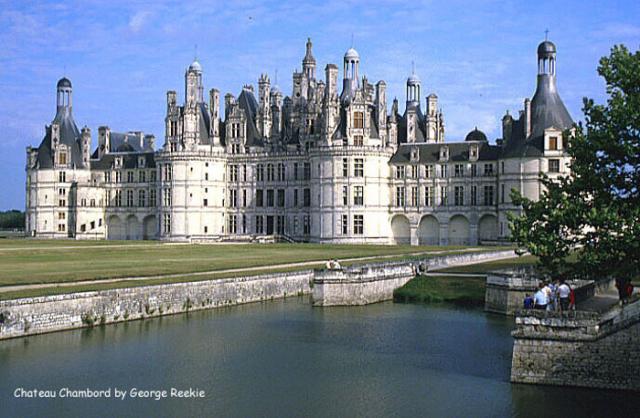The royal Château de Chambord at Chambord, Loir-et-Cher, France is one of the most recognizable châteaux in the world because of its very distinct French Renaissance architecture that blends traditional French medieval forms with classical Italian structures.
It was constructed by King François I in part to be near to his mistress the Comtesse de Thoury, a member of a very important family of France, whose domaine the château de Muides was adjacent. Her arms figure in the carved decor of the château.
Chambord is the largest castle in the Loire Valley, but was built to serve only as a hunting lodge for François I, who maintained his royal residences at Château de Blois and at Château d'Amboise. The original design of the Château de Chambord is attributed, though with several doubts, to Domenico da Cortona, whose wooden model for the design survived long enough to be drawn by André Félibien in the seventeenth century. Some authors, though, claim that the French Renaissance architect Philibert Delorme had a considerable role in the Château's design.
Chambord was altered considerably during the twenty years of its construction (1519 ‑ 1547), during which it was overseen on-site by Pierre Nepveu. In 1913 Marcel Reymond first suggested that Leonardo da Vinci, a guest of King François at Clos Lucé near Amboise, was responsible for the original design, which reflects Leonardo's plans for a château at Romorantin for the King's mother, and his interests in central planning and double helical staircases; the discussion has not yet concluded. Nearing completion, King François showed off his enormous symbol of wealth and power by hosting his old enemy, Emperor Charles V at Chambord.
 Château de Chambord - Loire Valley - France
Château de Chambord - Loire Valley - France

 [ 1 ]
[ 1 ]  [
[

